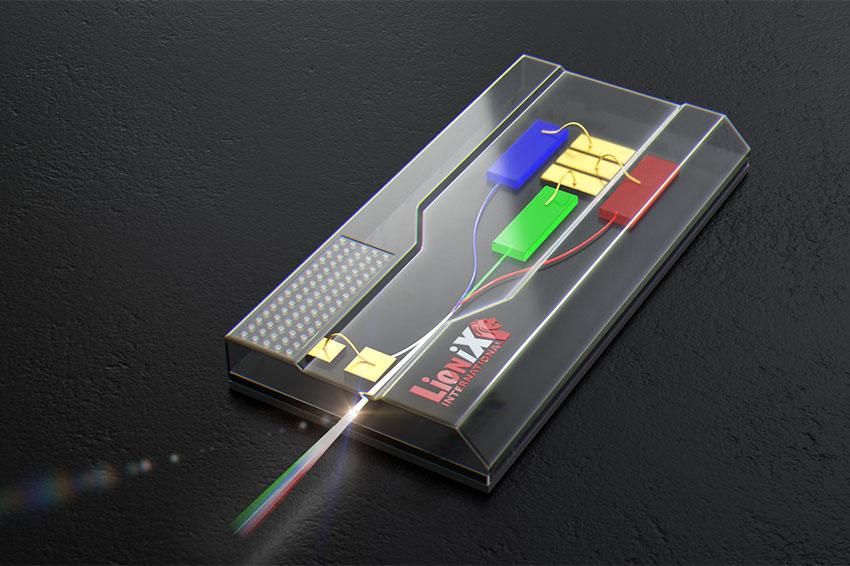A laser light engine for AR headsets
Novel wafer-level processes enable commercial production
The AR hardware market promises tens of billions of dollars of growth in the next few years. But issues with the integration of light sources threaten progress for headset developers.
Currently, AR manufacturers looking for the brightest light sources are limited to bulky separate laser diodes. This makes for inelegant headsets and makes production scaling difficult. Lionix International have integrated the highest performing laser diodes on a chip to create a tiny RGB light source that can be scaled to very high production volumes.
Much promising, the laser engine is a complete modular solution – it combines all the optical and electronic interfaces required for direct integration into a headset.
“This is an amazing opportunity for a disruptive AR company to be the first to market with really slim and fashionable glasses and leading imaging quality,” says Douwe Geuzebroek, PhD, Lionix’ vice president marketing and sales.
“Whilst we’re ready to hit production right now and scale to the desired volumes, we also specialize in co-developing our solutions to meet our customers’ needs. So we’re a best-of-both worlds combination of high standardization with the option to further customize the development for lead customers.”
The new RGB light engine benefits from the company’s twenty year track record in the design and assembly of photonic integrated circuit technology, especially for visible light. Equally important is Lionix’s use of novel wafer-level processes that enable production at volumes required by commercial customers.
Further reading: Douwe Geuzebroek, Ronald Dekker, Paul van Dijk: Photonics Packaging Made Visible – Scalable assembly and packaging of photonic integrated circuits for emerging applications, Optik Photonik 12(5), December 2017; DOI: 10.1002/opph.201700033
Contact
LioniX International BV
Building The Gallery, Hengelosestraat 500
7521 AN Enschede
Netherlands
+31 53 2030-053
+31 53 2011-303







